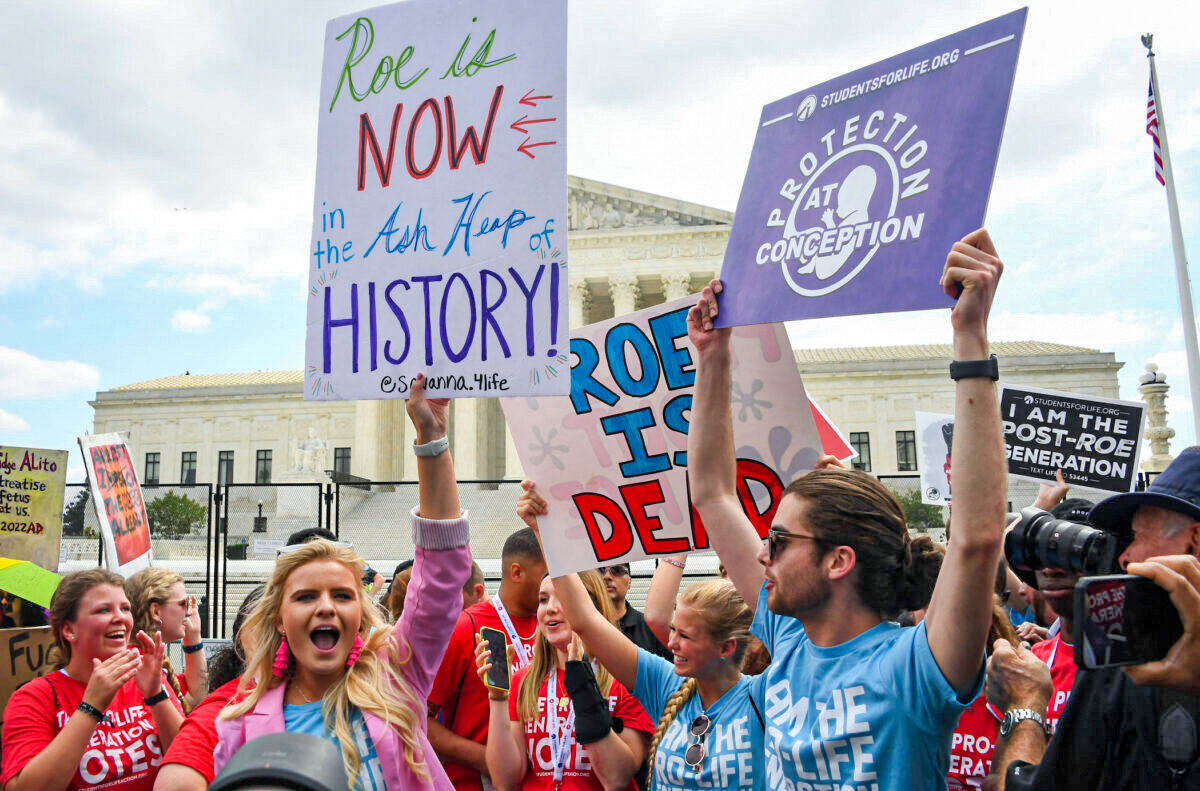

Nearly one year after the Supreme Court’s historic reversal of Roe v. Wade, states across the country are still hashing out where they stand on the issue of abortion.
This week, the popular stance has been to increase protections for the unborn.
In South Carolina, for instance, after hours of voting down hundreds of Democrat amendments, the state’s Republican-controlled House of Representatives voted late on May 17 to pass a bill that would ban most abortions after a fetal heartbeat is detected, which typically occurs around six weeks into a pregnancy.
The vote follows a failed attempt in April to pass a near-total abortion ban in the state and the South Carolina Supreme Court’s January decision to strike down a similar six-week ban passed in 2021.
In its ruling, the court held that the previous ban violated the right to privacy in the South Carolina Constitution. As a result, abortion is currently legal in the state through 22 weeks gestation.
The new bill will now need the approval of the state Senate, also controlled by the GOP, before it passes to the desk of Republican Gov. Henry McMaster, who is expected to sign it into law.
Meanwhile, in neighboring North Carolina, Republican legislators banded together on May 16 to override Democratic Gov. Roy Cooper’s veto of a law that will ban most abortions in the state after 12 weeks and impose new restrictions on chemical abortions beginning July 1.
Additionally, that same day in Nebraska, the state’s unicameral legislature voted to move forward with incorporating a 12-week abortion ban into a bill banning sex-change operations for minors.
“The momentum for life continues,” said Susan B. Anthony Pro-Life America President Marjorie Dannenfelser, celebrating the developments in a statement.
“Pro-life leaders are building a culture of life, protecting unborn children, and providing vital support for moms and families,” Dannenfelser noted. “They’re making childcare more accessible; increasing access to postpartum medical care; and creating paternity leave, educational support, and funding for pregnancy centers on the frontline helping mothers.
“We’re not even close to done yet,” she added, advising that her organization would also be advocating for a federal abortion ban.
The latest victories for the pro-life movement build upon other recent moves across the country to restrict access to abortion.
In Montana, Republican Gov. Greg Gianforte signed a spate of bills earlier this month aimed at tightening restrictions on the procedure, including a ban on abortions after 24 weeks, save when the mother’s life is at risk.
Additionally, last month, Florida passed a six-week abortion ban—with multiple exceptions—but that law will only take effect if the state’s current embattled 15-week ban is upheld by the Florida Supreme Court.
Meanwhile, a near-total abortion ban remains in effect in Kentucky as litigation over the law plays out, while other restrictions in Indiana, Ohio, and Iowa are tied up in court.
While many states have cracked down on the legality of abortion in general, chemical abortion has faced heightened scrutiny in recent months as the Food and Drug Administration’s (FDA) approval of the abortion drug mifepristone has been called into question.
In November, a group of doctors and medical associations sued the FDA, arguing that the agency unlawfully rushed its approval of the abortion pill without adequately reviewing its safety.
Last month, a federal judge sided with those medical professionals, finding that the FDA should not have approved the drug and that the agency improperly lifted restrictions for its use. That ruling has been appealed by the Department of Justice.
Following oral arguments in the case on May 17, Erin Hawley, vice president of the Center for Life and regulatory practice at Alliance Defending Freedom, said the FDA should be held accountable for injuries women had sustained from taking mifepristone.
“The FDA must answer for the damage it has caused to the health of countless women and girls and the rule of law by failing to study how dangerous the chemical abortion drug regimen is and unlawfully removing every meaningful safeguard, even allowing for mail-order abortions,” argued Hawley, who represents the doctors in the lawsuit, at a press conference.
“These illegal actions do not reflect ‘scientific’ judgment but rather reveal politically driven decisions to push a dangerous drug regimen without regard to women’s health or the rule of law,” she added. “The public interest weighs in favor of taking a dangerous drug with no meaningful safeguards off the market.”
During the hearing, the Justice Department contended that the court had no business questioning the FDA’s rulings on the safety of drugs—an argument that did not appear to sit well Judge James Ho, a Trump appointee.
“I don’t understand the statement that the FDA can do no wrong,” Ho said. “We are allowed to look at the FDA just like we’re allowed to look at any agency. That’s the role of the courts.”
The judge also seemed skeptical that the abortion drug was eligible for the FDA’s expedited approval process, which is limited for use in cases related to serious illness.
“Pregnancy is not a serious illness … when we celebrated Mother’s Day, were we celebrating illness?” he asked.
With the future availability of mifepristone in question and the tightening of abortion restrictions across the country, the nation’s biggest abortion provider has begun lobbying for the expansion of the Supreme Court.
“As we continue to face unrelenting attacks on our basic freedoms, our courts must be one backstop to protecting our rights,” asserted Alexis McGill Johnson, CEO and president of Planned Parenthood Federation of America, in a May 17 statement.
“Instead, the courts have been used as a vehicle to advance a dangerous agenda against abortion rights, voting rights, LGBTQ+ rights, and so much more,” she said. “Planned Parenthood refuses to accept that our courts can only exist as they do now, and understands that reforms are integral to building the public’s trust that the courts can and will function to uphold hard-won freedoms and advance justice for future generations.”
Historically, the number of justices on the Supreme Court has changed seven times since the court was established in 1789, with the most recent change occurring in 1869. Since then, the court has held steady at nine justices, though President Franklin Roosevelt attempted to add more.
In addition to an expansion of the Supreme Court, term limits for Supreme Court justices and an increase in the number of lower court judges are among the other changes the pro-abortion advocacy group is pushing for.
The call to pack the courts was also taken up this week by Senate Democrats, who introduced a bill that would add four new seats on the Supreme Court.
In unveiling the Judiciary Act of 2023 on May 16, Sen. Ed Markey (D-Mass.) charged that the current Supreme Court is not only too conservative in its political leanings but also illegitimate.
“Our most fundamentally held freedoms are under attack from an illegitimate, far-right United States Supreme Court,” Markey said at a news conference on the steps of the Supreme Court. “And if we fail to act, it will only get worse. We must fix this broken and illegitimate court. We must expand the United States Supreme Court.”
Republicans have opposed the idea of court-packing, holding that Democrats simply want to add more liberal-leaning justices to secure the legal outcomes they desire.
“The Democrats’ answer to a Supreme Court that is dedicated to upholding the rule of law and the Constitution is to pack it with liberals who will rule the way they want,” Sen. Ted Cruz (R-Texas) told The Epoch Times in March after introducing a constitutional amendment that would block future attempts to add seats to the court.
“The Supreme Court should be independent, not inflated by every new administration,” he added.
But even with Democrats’ thin majority in the Senate, as Republicans have control of the House, Markey’s measure is likely to be dead on arrival there, if it makes it that far.
Matthew Vadum contributed to this report.
Subscribe to George Magazine and unlock exclusive bonuses. Your subscription now includes a free crypto essentials guide and three premium downloadable images. These images are perfect for personal use as desktop or mobile backgrounds, with thumbnail previews shown below.


![Enjoy the [Road] Show Travel Mug with Handle, 14ozEnjoy the [Road] Show Travel Mug with Handle, 14oz](https://georgemagazine.com/wp-content/uploads/2024/08/479070202831754764_2048-300x300.jpeg)

Discount Applied Successfully!
Your savings have been added to the cart.